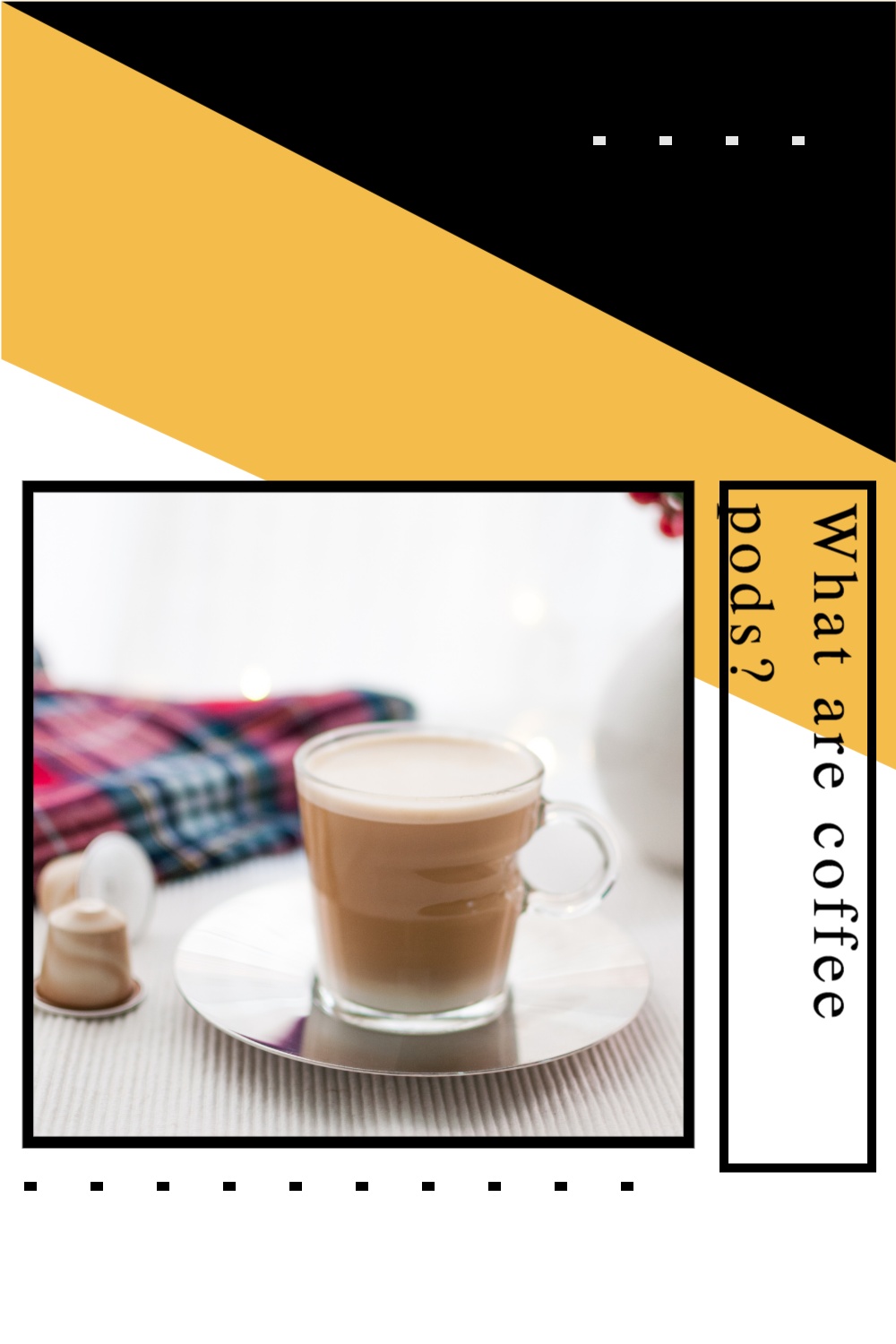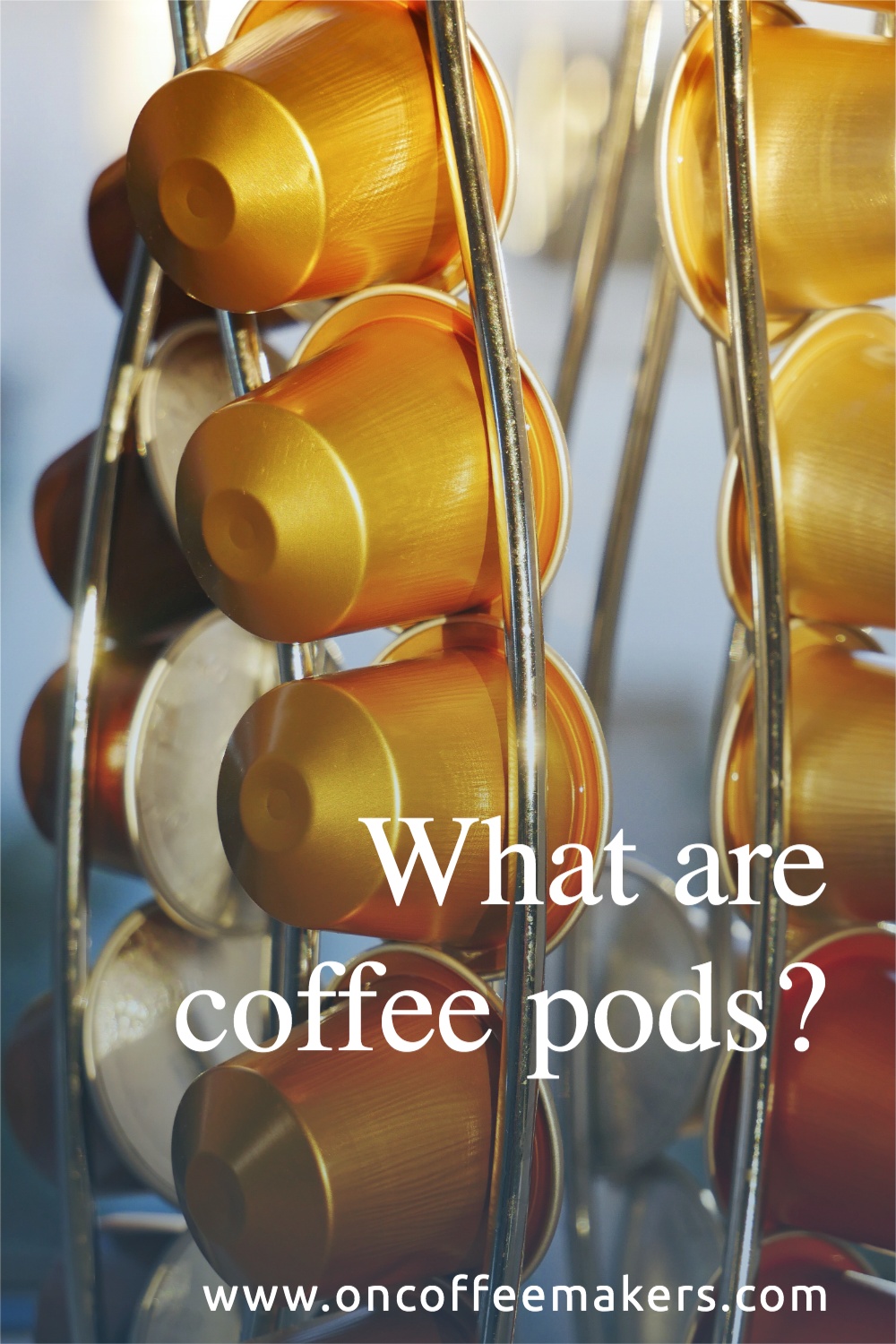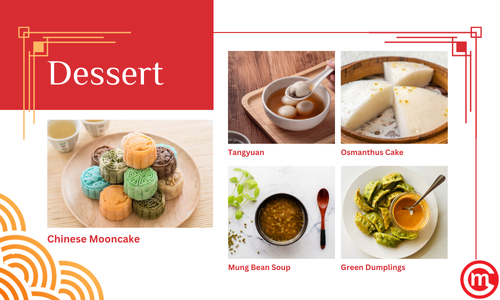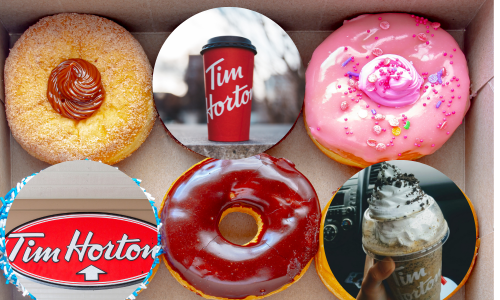What Are Coffee Pods & Coffee Capsules?
What are coffee pods and coffee capsules? - Coffee pods and coffee capsules are essentially single serve formats of coffee. Each coffee pod or capsule is made to produce a single cup of coffee only.

The pod or capsule serves as the vessel in this coffee brewing process and houses a certain amount of coffee grounds (usually 5gm to 8gm of coffee). The pod or capsule is then inserted into a coffee maker or pod brewer, within which coffee extraction takes place.
Common examples of coffee pods and capsules include Nespresso capsules, as well as Keurig K Cups. There are also other formats of pods and capsules produced by other producers such as Illy and Lavazza, though those are not as commonly found or widely used.
Nespresso related questions
Video above: How to use Nespresso pods without a machine.
Can you use your own coffee with Nespresso Machine?
Check out other: questions about coffee.
Coffee pods and coffee capsules differ by brand, the shape and design (format) of the pod or capsule, and by the compatible machines that one may use such pods and capsules.
The terms are often interchangeable in casual discussion, though technically, a pod and a capsule are different in the way the coffee grounds are housed.
Capsules house coffee grounds in a hermetically sealed plastic cup, with an aluminium foil seal over the top, In recent years, capsules have also adopted aluminium to create the capsules, which biodegradable capsules are also on the uptrend and being adopted by more and more coffee companies (who want to reduce the environmental impact of single use plastics).
In contrast, a pod houses coffee grounds inside a tightly packed mesh bag which features very fine holes. There is no additional hard covering on coffee pods and can be inserted straight into a compatible pod brewer.
Though different in format, coffee pods and coffee capsules produce the same, if not very similar end products. From a convenience standpoint, both pods and capsules fulfil exactly the same role, with both formats able to extract very decent espresso shots or brewed coffee when used on a compatible coffee maker.

So, if they are similar, then why do these two formats exist together? The key difference is in the shelf life of the product and therefore its applications and target market.
For coffee pods, the coffee grounds are not hermetically sealed and are to an extent, the coffee grounds are still susceptible to interaction with the air. As such, the product has a shorter shelf life. However, this shorter shelf life is not an issue for foodservice operations who have a high turnover.
Thus, it is more common to see coffee pods being used in places like a hotel lobby cafe or a buffet restaurant. Due to the absence of an additional hard capsule, the price of production is also lower and more cost effective for foodservice players to employ.
In comparison, capsules are hermetically sealed and have a much longer shelf life than coffee pods. This works well for the consumer market who use capsules in their own homes. Naturally, home consumption is not as quick as a food service operation - thus, shelf life is of greater importance here.
Another aspect of having a plastic, aluminium, or biodegradable capsule, is the ability to brand and utilise colour schemes on the capsules (much like what Nespresso does). This once again makes it a more viable format for the consumer and home use market.
If you are looking for more questions such as "What are coffee pods", check out our homepage, or drop us a message below.
About US | OCM Profile
OCM (OnCoffeeMakers.com) was started in 2007 with the first webpage about coffee machines. And for a number of years, we focused on helping people find their desired coffee machine (we still are helping folks with that! So, if you are looking for coffee machines for office or restaurants - check out the link).
In 2010, we started getting enquiries on restaurant marketing and we start to help food and beverage brands with their marketing. Below are campaigns and events that we have done over the years:
OCM's campaigns: F&B Marketing Ideas by OCM
OCM's Events: F&B Industry events by or with OCM
Check out this restaurant marketing guide to learn more about the many campaigns and companies we have worked with.
Since then, we have also created many marketing workshops and classes for the F&B industry. Many of these modules are still running in tertiary institutions such as Temasek Polytechnic Skillsfuture Academy and also ITE College East COC classes, below are some snippets of our lectures and workshops:
OCM’s F&B workshops: Food and Beverage Marketing Lectures | Workshops - click to watch classes on customer journey map, JTBD and more.
So, if you are looking for industry practitioners to help you scale your coffee or F&B businesses, do drop us a message or book an appointment. Do also check out our various social media platforms on regular F&B and coffee market updates:
For regular coffee (F&B) related videos: OCM Youtube
For Daily Coffee Inspiration (fun coffee content): OCM IG
For insights into the coffee (F&B) industry: OCM LinkedIN
PS: For the coffee lovers, we continue to share coffee articles (and videos) and have also started a free coffee class section (with free online coffee training supported by coffee partners).
Featured coffee brewing method: How to prepare V60 Coffee?
Previously: Making Coffee with a Coffee Sock.
Recent Articles
-
How to Do Menu Engineering: Complete Guide to Restaurant Profitability
Sep 27, 24 03:09 AM
Learn how to do menu engineering to boost your restaurant’s profitability. Discover strategies for menu design, pricing, and maximizing profitability. -
Tim Hortons Singapore is a Canadian Coffee Chain?
Nov 16, 23 09:00 AM
Do you know that Tim Hortons Singapore is a Canadian Coffee Chain? Apparently only 46% knows that in our IG poll! -
Coffee report on WMF Coffee Machine Brand in Singapore
Oct 11, 23 03:45 AM
Coffee report on WMF Coffee Machine Brand in Singapore
Featured: Office Coffee Machines
Follow Oncoffeemakers.com's board Office Coffee Machines | Singapore on Pinterest.Do check out other cool boards such as the one all on how to make coffee and drip coffee.
Food and Beverage (F&B) Articles
Sustainability Practices in Food Service
3 Free Restaurant Marketing Ideas
Singapore Cafes Reviews -Can they be Trusted?
Location, location, location might be a myth!
Walmart and Walter -The Power of Social Media!
Importance of value pricing for Cafes In Singapore
Why Nescafe is still the Largest Roaster in the World?
Everyone likes Starbucks -here's why
Is your Cafe location an asset or a liability?
Location myopia: why good anchor tenant might not be good?
Measuring the Location attractiveness index.
Social Media Crisis Management for Cafes in Singapore


